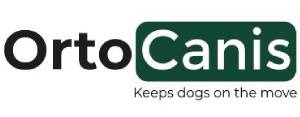Degenerative Myelopathy is the progressive and degenerative disease of an elderly dog’s spinal cord with an onset after 8 years olds. In the initial stages, dogs have uncoordinated movements, the hind legs fall or move in a strange way; one or both feet stagger and drag, or they walk with their knuckles.
The disease can start out in one hindlimb before affecting the other and eventually reaching the thoracic limbs. The weakness progressively worsens; the dog has difficulty staying upright and has trouble walking. It is a relatively pain-free disease and in the majority of cases it affects urination and defecation with the animal eventually becoming incontinent.
There are no treatments that minimize or arrest the degeneration but there are measures that can help suffering dogs maintain their quality of life. It is necessary that the animal does rehabilitation exercises and maintains certain lifestyle habits at home in order to avoid pressure ulcers, bladder infections and loss of mobility.
Physiotherapy and rehabilitation can help slow the process. It can help control the secondary pain symptoms caused by the animal when attempting to move (stress). An attempt is made at slowing the onset of atrophy (loss of muscle mass) and preserving the function of the forelimbs, as well as conserving the integrity of the hindlimbs in order to avoid ulcers and keep the animal active for as long as possible, stimulate its sensitivity and work on coordination and balance to give it a better quality of life.
For this purpose passive mobilization exercises, massages and stretching are used combined with heat, hot packs and any device that fights atrophy muscular electrostimulators, and pain, TENS.
Another part of therapy tries to preserve the animal's active mobility. Balls, boards, hydrotherapy, rods and cones, walks, etc. are used for this purpose to maintain active mobility with good coordination without a loss of balance. This stage is the most affected over the course of the disease and once the animal begins to deteriorate, or cannot support its own weight, rear support harnesses are used to maintain mobility if they only have trouble with the hind legs, or integral harnesses, that also support the forelimbs.
The latest development on the market is the Biko Brace, a device that enables the dog to walk when the disease has already significantly affected the hind legs. Using a custom wheelchair is necessary during the advanced stages of the disease.
When at home the animal must be in a comfortable spot that is cushioned yet firm enough for them to get on and off easily: special dog bed. If the disease is in the early stages and the animal can walk by shuffling its feet or using its knuckles, it is important that this area is protected with booties or dog socks to prevent ulcers.
It is very important to control the animal's nutrition and weight over the course of the disease in order to avoid complications.
In the following video we see Belle, a German Shepard suffering from Degenerative Myelopathy, before and after using the Biko-Brace device.
Canine Physical Therapist
Certified Canine Rehabilitation Practitioner from the University of Tennessee

